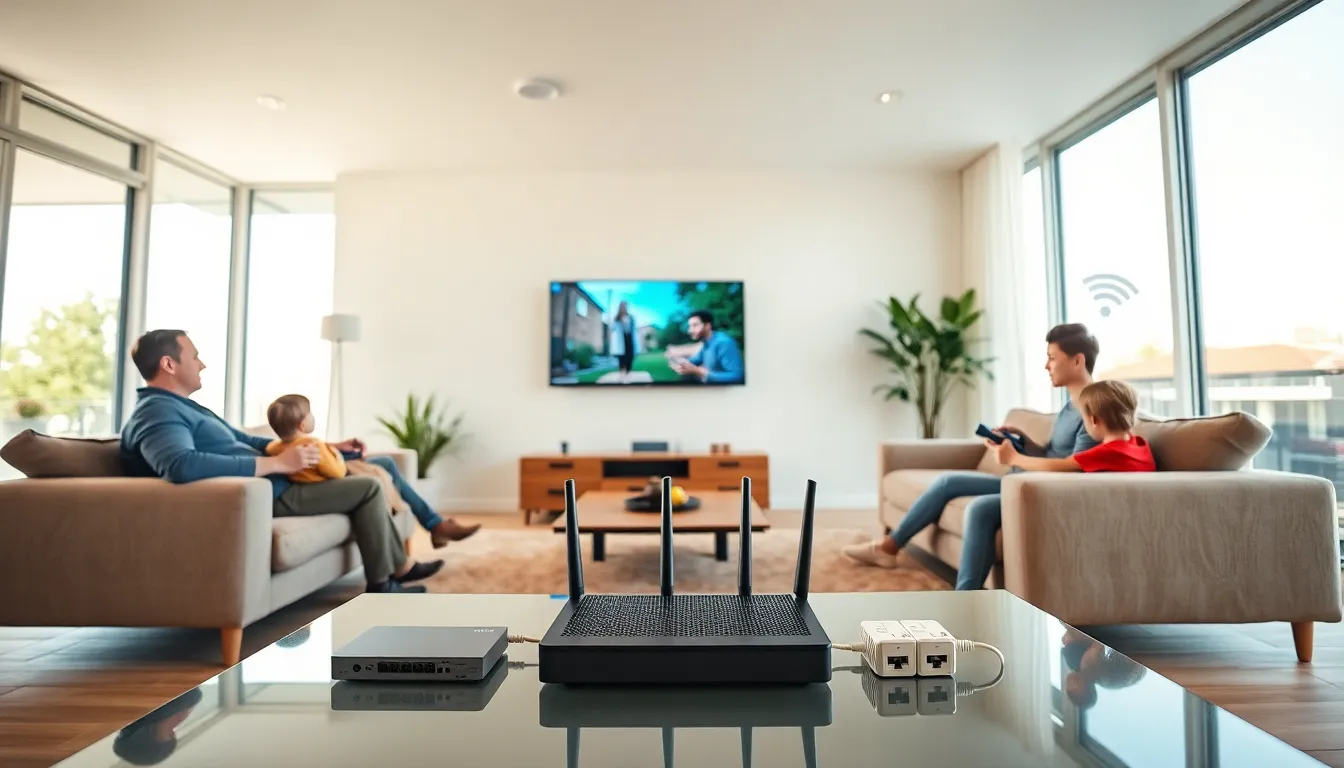In a world where the Wi-Fi signal often plays hide-and-seek, venturing into the realm of home networking installation services is a smart move. Think about it: streaming your favorite shows without buffering, gaming without glitches, and video conferencing without those awkward pauses. Home networking isn’t just a luxury: it’s a necessity. So, if your internet connection feels like it’s stuck in the slow lane, it might be time to consider professional installation services that could transform your network from drab to fab.
Table of Contents
ToggleUnderstanding Home Networking

Home networking is the backbone of modern living. It involves connecting multiple devices like smartphones, tablets, laptops, and smart TVs to a single internet connection. This networking set-up allows users to share and access resources seamlessly across devices. When someone talks about home networking, they’re referring not just to the internet itself, but a whole ecosystem of connected gadgets. At its core, a home network enhances convenience, productivity, and entertainment in daily living. But, without the proper installation, a home network can become a confusing mess of cables and signals. That’s where professional help comes in.
Types of Home Networks
There are various types of home networks, each catering to different needs. The most common is a wireless network, ideal for homeowners who value mobility and the ability to connect multiple devices without the clutter of wires. With the flick of a switch or the tap of a button, a homeowner can enjoy wireless internet in every corner of their abode.
On the other hand, wired networks offer stability and reliability that wireless setups might lack. For those who stream large files or play online games, a wired connection ensures a steady flow of data without interruptions. Then, there are hybrid setups, which combine the best of both worlds, employing both wired and wireless technologies to optimize performance. Knowing which network type suits personal needs can make all the difference.
Components of a Home Network
A home network consists of several key components that work together to provide seamless connectivity. The center of this universe is the router, a device that connects the home to the internet and distributes the connection to various devices. Then there’s the modem, which establishes the connection with the internet service provider.
Switches and access points also play crucial roles. Switches expand the network’s capacity, allowing more devices to connect, while access points extend wireless signals to hard-to-reach areas. Don’t forget about cables, both Ethernet and coaxial, which ensure robust connections in wired setups. A solid understanding of these components can help homeowners appreciate their networks better, leading to a better-designed installation.
Benefits of Professional Installation Services
Opting for professional home networking installation services provides numerous benefits that DIY attempts rarely achieve. First and foremost is expert knowledge. Trained professionals have extensive experience in setting up networks, diagnosing issues, and optimizing performance. They can troubleshoot problems before they become headaches, ensuring that everything functions harmoniously right out of the gate.
Also, professional installation can save homeowners a significant amount of time. Instead of spending hours wrestling with cables and settings, an expert can streamline the process, allowing residents to enjoy their enhanced connectivity sooner. Professional services also typically come with guarantees. This means if something goes awry after installation, help is just a call away, no need to sweat about wiring disasters.
Choosing the Right Installation Service
Selecting the right home networking installation service can feel overwhelming with so many options. First, consider the company’s reputation. Look for reviews and testimonials from previous customers. A reliable service will have a track record of high reviews and satisfied clients.
Next, evaluate the qualifications of the technicians. Are they certified? Can they explain complex networking concepts in simple terms? It’s a red flag if they can’t. A quality service will provide clear outlines about costs and services included, so no hidden fees will blindside you later. Finally, ask about support options. Do they offer ongoing support or maintenance? This is crucial for long-term network health.
Preparing for Your Home Networking Installation
Once you’ve selected a home networking installation service, preparation is key. Start by mapping out where routers, switches, and devices will go. This will help the technicians optimize performance based on the layout of your home.
Clear pathways for cables to run, especially if a wired network is on the menu. Homeowners should also take stock of all devices that will connect to the network. Providing this information to the installation team will help them tailor the setup to specific needs. Finally, discuss any special requirements in advance to ensure that the installation goes as smoothly as possible.





